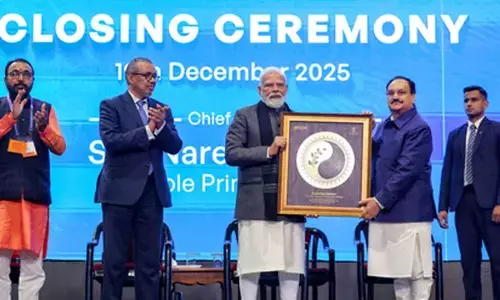IIT-J study to boost driving comfort of EV two-wheelers

IIT-J study to boost driving comfort of EV two-wheelers
Researchers at the Indian Institute of Technology (IIT) Jodhpur have presented a solution to reduce oscillation in electric two-wheeler vehicles due to uneven drive surface.
Researchers at the Indian Institute of Technology (IIT) Jodhpur have presented a solution to reduce oscillation in electric two-wheeler vehicles due to uneven drive surface.
The proposed approach is an Integral Sliding Mode Control Based Direct Torque Control (ISM-DTC) method for Induction Motor (IM). This approach aims to leverage the inherent qualities of disturbance rejection and robustness against operational uncertainties and parametric variations.
It also seeks to enhance the performance of the conventional Proportional-Integral (PI)-based DTC (PIDTC) approach in uncertain EV driving conditions.
"The proposed work has significant scope in improving driving comforts affected by various road conditions for EVs," said Dr Deepak Fulwani, Associate Professor, Department of Electrical Engineering, IIT Jodhpur, in a statement.
To maintain speed and serve as a nominal control, the proposed control method is integrated with PIDTC.
The non-linear ISM loop effectively counteracts speed variations by ensuring that the electromagnetic torque and dynamic load torque demand are balanced.
Additionally, the proposed control method cancels out uncertainties.
The findings in this work can be fine-tuned for various electric vehicles to improve driving experience. A robust controller is also developed which can mitigate effects of uneven road surfaces. The controller can be integrated with any existing controller so retrofitting is possible.
The research was published in the journal IEEE Transactions Vehicular Technology.
The transport sector is a major contributor to carbon emissions, with internal combustion engine (ICE) vehicles responsible for approximately 26 per cent of total air pollution.
As a result, there has been a sustained effort to replace these conventional vehicles with electric vehicles (EVs) to minimise harmful emissions. This push has stimulated research in the development and control of EVs, as well as the creation of efficient batteries, durable motor design, and cost-effective vehicle production methods to improve performance and make EVs a viable alternative to ICE vehicles.














